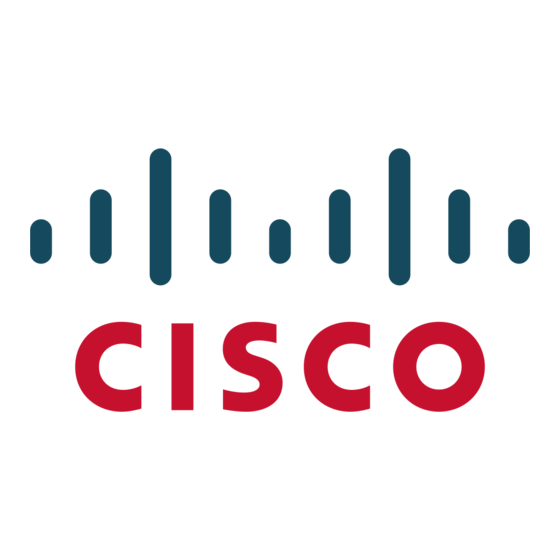Cisco 3550-24 - Catalyst SMI Switch Datenblatt - Seite 7
Blättern Sie online oder laden Sie pdf Datenblatt für Schalter Cisco 3550-24 - Catalyst SMI Switch herunter. Cisco 3550-24 - Catalyst SMI Switch 21 Seiten. Cisco catalyst 3550-48: supplementary guide
Auch für Cisco 3550-24 - Catalyst SMI Switch: Produkt-Bulletin (3 seiten), Produkt-Bulletin (5 seiten), Fragen und Antworten (9 seiten)

A comprehensive set of Management Information Bases (MIBs) is provided for the service provider to collect traffic
information on the Cisco Catalyst 3550 Series for various billing methods.
Product Features and Benefits
Feature
Service Breadth
Layer 2 and Layer 3 VPN services
Voice and video services
All contents are Copyright © 1992–2002 Cisco Systems, Inc. All rights reserved. Important Notices and Privacy Statement.
Benefit
• 802.1Q tunneling expands VLAN space by using a VLAN-in-VLAN hierarchy,
and tagging the tagged packets. The 802.1Q tunneling feature enables
service providers to use a single VLAN to support customers who have
multiple VLANs, while preserving customer VLAN IDs and segregating
traffic from different customers within the service provider infrastructure
even when they appear to be on the same VLAN.
Multi-VRF CE (
•
VRF-lite) forms virtual packet-forwarding tables by
associating one or more Layer 3 interfaces with each VRF , allowing the
creation of multiple Layer 3 VPNs on a single Cisco Catalyst 3550 Series.
Interfaces in a VRF could be either physical, as in an Ethernet port, or logical,
as in a VLAN switch virtual interface (SVI)—requires Enhanced Multilayer
Software Image (EMI).
• Protocol-Independent Multicast (PIM) for IP multicast routing within a
network enables the network to receive the multicast feed requested and
allows switches not participating in the multicast to be pruned—support for
PIM sparse mode (PIM-SM), PIM dense mode (PIM-DM), and PIM
sparse-dense mode—requires Enhanced Multilayer Software Image (EMI).
• Distance Vector Multicast Routing Protocol (DVMRP) tunneling for
interconnecting two multicast-enabled networks across
non-multicast networks—requires Enhanced Multilayer Software
Image (EMI).
• IGMP filtering provides control of the set of multicast groups to which a user
on a switch port can belong.
• Voice VLAN (auxiliary VLAN) support for VoIP application allows the
creation of data and voice VLANs on the same physical port.
• Cisco Group Management Protocol (CGMP) server functionality enables a
switch to serve as the CGMP router for CGMP client switches—requires
Enhanced Multilayer Software Image (EMI).
• IGMP snooping allows fast client "joins" and "leaves" of multicast streams
and limits bandwidth-intensive video traffic to the requestors.
• Web Cache Communication Protocol (WCCP) enables integration of cache
engines into the network infrastructure. The cache engines transparently
store frequently accessed content and then locally fulfill successive requests
for the same content, eliminating repetitive transmissions of identical
content to web servers. Cache engines accelerate content delivery and
ensure maximum scalability and availability of content. In a service-provider
network, WCCP and cache engine solution can be deployed at the points of
presence (POPs)—requires Enhanced Multilayer Software Image (EMI).
Cisco Systems, Inc.
Page 7 of 20
